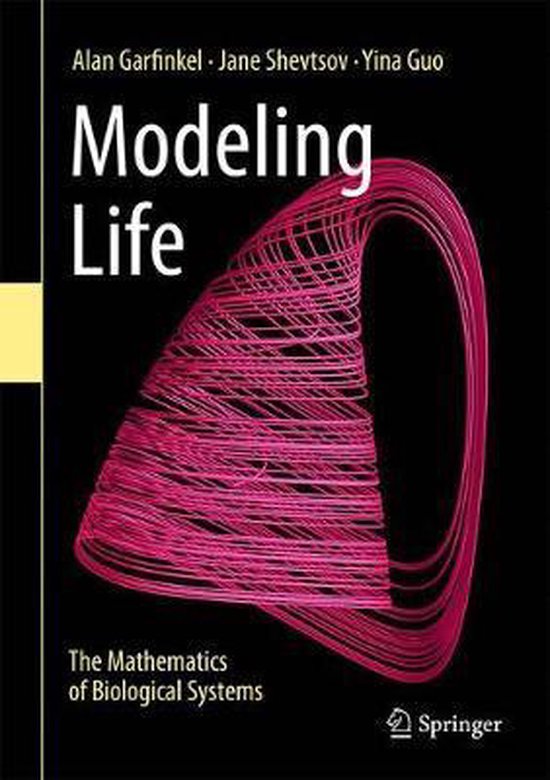
Modeling Life
This book develops the mathematical tools essential for students in the life sciences to describe interacting systems and predict their behavior.
From predator-prey populations in an ecosystem, to hormone regulation within the body, the natural world abounds in dynamical systems that affect us profoundly. This book develops the mathematical tools essential for students in the life sciences to describe these interacting systems and to understand and predict their behavior. Complex feedback relations and counter-intuitive responses are common in dynamical systems in nature; this book develops the quantitative skills needed to explore these interactions. Differential equations are the natural mathematical tool for quantifying change, and are the driving force throughout this book. The use of Euler’s method makes nonlinear examples tractable and accessible to a broad spectrum of early-stage undergraduates, thus providing a practical alternative to the procedural approach of a traditional Calculus curriculum. Tools are developed within numerous, relevant examples, with an emphasis on the construction, evaluation, and interpretation of mathematical models throughout. Encountering these concepts in context, students learn not only quantitative techniques, but how to bridge between biological and mathematical ways of thinking. Examples range broadly, exploring the dynamics of neurons and the immune system, through to population dynamics and the Google PageRank algorithm. Each scenario relies only on an interest in the natural world; no biological expertise is assumed of student or instructor. Building on a single prerequisite of Precalculus, the book suits a two-quarter sequence for first or second year undergraduates, and meets the mathematical requirements of medical school entry. The later material provides opportunities for more advanced students in both mathematics and life sciences to revisit theoretical knowledge in a rich, real-world framework. In all cases, the focus is clear: how does the math help us understand the science?
This book develops the mathematical tools essential for students in the life sciences to describe interacting systems and predict their behavior. From predator-prey populations in an ecosystem, to hormone regulation within the body, the natural world abounds in dynamical systems that affect us profoundly. Complex feedback relations and counter-intuitive responses are common in nature; this book develops the quantitative skills needed to explore these interactions.
Differential equations are the natural mathematical tool for quantifying change, and are the driving force throughout this book. The use of Euler’s method makes nonlinear examples tractable and accessible to a broad spectrum of early-stage undergraduates, thus providing a practical alternative to the procedural approach of a traditional Calculus curriculum. Tools are developed within numerous, relevant examples, with an emphasis on the construction, evaluation, and interpretation of mathematical models throughout. Encountering these concepts in context, students learn not only quantitative techniques, but how to bridge between biological and mathematical ways of thinking.Examples range broadly, exploring the dynamics of neurons and the immune system, through to population dynamics and the Google PageRank algorithm. Each scenario relies only on an interest in the natural world; no biological expertise is assumed of student or instructor. Building on a single prerequisite of Precalculus, the book suits a two-quarter sequence for first or second year undergraduates, and meets the mathematical requirements of medical school entry. The later material provides opportunities for more advanced students in both mathematics and life sciences to revisit theoretical knowledge in a rich, real-world framework. In all cases, the focus is clear: how does the math help us understand the science?
| Auteur | | Alan Garfinkel |
| Taal | | Engels |
| Type | | Paperback |
| Categorie | | Wetenschap & Natuur |





